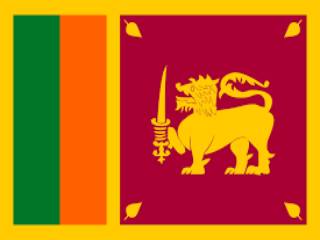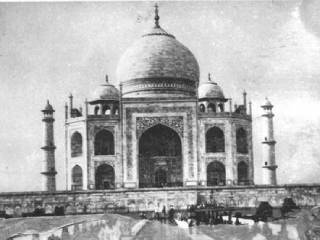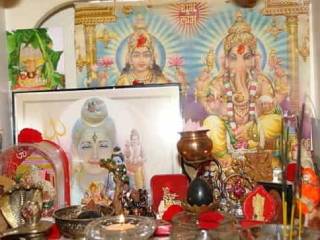
When MPs and other political leaders direct their ire at the Government and charge it of not initiating the political process of reconciliation in Kashmir, there is a general presumption that good ideas must be accommodated. My experience suggests that the whole business is a combination of the delusional and the humbug.
This was amply demonstrated by the all-party meeting hosted by Prime Minister Narendra Modi on Friday, after Parliament had concluded its Monsoon session. The demand for such a gathering had been mooted by different MPs during the parliamentary debates for two reasons: To show a measure of national unity and because it is a Pavlovian response to any sense. When political parties feel particularly aggrieved, they usually rush to the well of the Houses of Parliament or march up Raisina Hill to present a petition to Parliament. Likewise, an all-party meeting followed by an all-party delegation to Srinagar have become template responses to any prolonged crisis in Kashmir. Many political leaders even manage to look serious when pressing for such a talk shop.
At one level, there is a genuine desire to express concern over the happenings in the Kashmir Valley and to reaffirm that the unity and integrity of India is non-negotiable. However, when it comes to offering suggestions as to what is the best course for the Government, there is a certain paucity of ideas. What has become sufficiently clear is that few politicians and parties are willing to openly acknowledge that the unrest in Kashmir has climbed new and more dangerous heights.
It is important to acknowledge the changes. Had the battlelines been over the quantum of regional autonomy to be conferred on the State of Jammu & Kashmir, the country could have afforded to reiterate PV Narasimha Rao’s assertion that the sky was the limit. We could well have afforded to engage in another bout of Constitutional hair-splitting over the pre-1953 status or the very utility of Article 370 that confers ‘special status’ on the State.
Alas, things have moved well beyond regional status and deliberations over a financial ‘package’ to the troubled State. It is important to remember that the present bout of disturbances originated in the demonstrations that began last month following the death of Hizbul Mujahedeen commander Burhan Wani in an encounter with the para-military forces.
Wani, it is important to note, was not a conventional politician with a mass following: He was a proud terrorist who had at least 20 cases pending against him. He flaunted his gun proudly on Facebook and in all probability had killed his opponents — both Kashmiri and others — mercilessly. He was waging war against the Indian State and was killed in the course of this war. The forces that engaged him in battle may or may not have known that he was present during the gun battle. Frankly it doesn’t matter. Wani would not have dropped his gun and come out with his hands held high. He chose to play by the rules of the gun and died as a consequence.
The demonstrations that ensued are in solidarity with Wani. They were not about Kashmiri people protesting against human rights abuses; they were about the glorification of a terrorist. The demonstrators were not routinely violating section 144 — violations that happen all the time in India; they were attacking all symbols of authority with an aim of replacing them with a parallel Government —what Communist mythology used to glorify in the past as dual power.
More important, the demonstrators flaunted Pakistani flags when they chanted azadi. This is an important issue. In the past, many bleeding hearts have allowed themselves to believe that azadi was a benign slogan that articulated the dream of Kashmiri independence, the so-called third option. To believe so today is absolute humbug. Today’s demonstrators and activists are demanding the integration of Jammu and Kashmir (or at least the Kashmir Valley) with Pakistan. They are not merely separatists, they are also secessionists and potentially a fifth column.
Why anyone in their right minds would want to trade their Indian passports for a Pakistani passport must remain a source of unending consternation. Pakistan itself is in such a terrible condition and wracked by civil unrest and terrorism that it requires a special mental state to be a part of it.
It is the pro-Pakistan dimension that tells its own story. All the reportage from the ground suggests that the mobilisation is being effected from the mosques and places of worship. In short, there is now a explicit religious dimension to the movement: The Kashmir disturbances are now part of a larger Islamist churning.
The insistence on women’s ‘modesty’ and the claim of defending the faith against a Hindu State are part of this Islamist dimension. At one time Kashmiriyat did indeed imply a large dose of Sufiana. The Kashmiriyat in evidence on the streets today is quite emphatically Islamiyat. One of Wani’s last messages is said to have advocated the establishment of a Caliphate in Kashmir.
There is always a place for goody-goody talk in our polity. Alas, that moment has gone. We are now in the frontline of a global war. Let’s remember that before we go on about the healing touch and other tripe. If we don’t defeat Islamism in J&K, we will be looking at the war spilling over south of the Banihal Pass.
Source : Daily Pioneer

 Mizoram: EC accepts Christians’ demand to defer counting on Sunday, but what if Hindus had made a similar demand?
Mizoram: EC accepts Christians’ demand to defer counting on Sunday, but what if Hindus had made a similar demand? Sign Petition : Immediately repeal the draconian and unconstitutional ‘The Waqf Act, 1995’
Sign Petition : Immediately repeal the draconian and unconstitutional ‘The Waqf Act, 1995’ Shriram : Sri Lanka’s saviour
Shriram : Sri Lanka’s saviour Why it is so cool to malign Hindu gods and goddesses, but it may not be that easy now
Why it is so cool to malign Hindu gods and goddesses, but it may not be that easy now Shocking Truth of Taj Mahal exposed by Late Pujya P. N. Oak
Shocking Truth of Taj Mahal exposed by Late Pujya P. N. Oak How are Hindus treated in states where they are in a minority?
How are Hindus treated in states where they are in a minority?